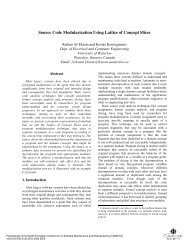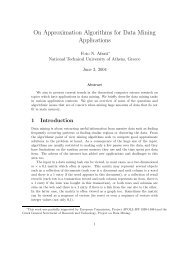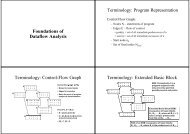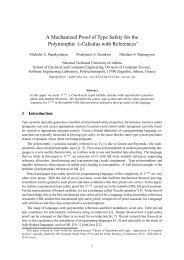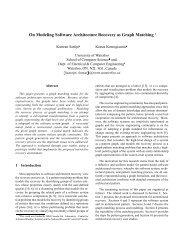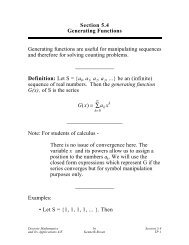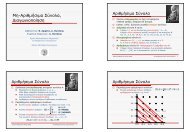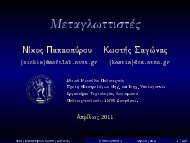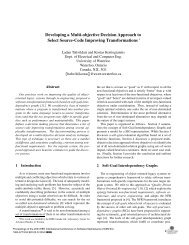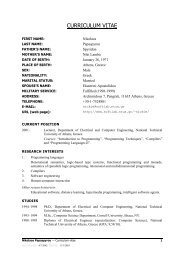Manual
Manual
Manual
You also want an ePaper? Increase the reach of your titles
YUMPU automatically turns print PDFs into web optimized ePapers that Google loves.
Chapter 2: Examples 31<br />
This addition to the grammar allows for simple error recovery in the event of a syntax<br />
error. If an expression that cannot be evaluated is read, the error will be recognized by the<br />
third rule for line, and parsing will continue. (The yyerror function is still called upon<br />
to print its message as well.) The action executes the statement yyerrok, a macro defined<br />
automatically by Bison; its meaning is that error recovery is complete (see Chapter 6 [Error<br />
Recovery], page 83). Note the difference between yyerrok and yyerror; neither one is a<br />
misprint.<br />
This form of error recovery deals with syntax errors. There are other kinds of errors; for<br />
example, division by zero, which raises an exception signal that is normally fatal. A real<br />
calculator program must handle this signal and use longjmp to return to main and resume<br />
parsing input lines; it would also have to discard the rest of the current line of input. We<br />
won’t discuss this issue further because it is not specific to Bison programs.<br />
2.4 Location Tracking Calculator: ltcalc<br />
This example extends the infix notation calculator with location tracking. This feature will<br />
be used to improve the error messages. For the sake of clarity, this example is a simple<br />
integer calculator, since most of the work needed to use locations will be done in the lexical<br />
analyzer.<br />
2.4.1 Declarations for ltcalc<br />
The C and Bison declarations for the location tracking calculator are the same as the<br />
declarations for the infix notation calculator.<br />
/* Location tracking calculator. */<br />
%{<br />
#define YYSTYPE int<br />
#include <br />
int yylex (void);<br />
void yyerror (char const *);<br />
%}<br />
/* Bison declarations. */<br />
%token NUM<br />
%left ’-’ ’+’<br />
%left ’*’ ’/’<br />
%left NEG<br />
%right ’^’<br />
%% /* The grammar follows. */<br />
Note there are no declarations specific to locations. Defining a data type for storing locations<br />
is not needed: we will use the type provided by default (see Section 3.6.1 [Data Types of<br />
Locations], page 51), which is a four member structure with the following integer fields:<br />
first_line, first_column, last_line and last_column.



